With the match play portion of the California Amateur being contested this week at Rancho Santa Fe CC, it's a good time for a tour. I've been saving these photos since 2006 when I played the course for my 50th birthday a week after they hosted the USGS Jr Am. The Club has an interesting history starting in 1906 when the Atchison, Topeka and Santa Fe RR Co. acquired 8000 acres and planted over one million eucalyptus seedling to be used eventually for railroad ties. A severe drought in 1912 killed almost 40% and in 1913 a severe frost killed half of the remaining trees. The discovery of creosote in 1910 made the project redundant. The RR Co. decided to sell parcels of the land as “gentlemen's country estates” and a dam built in1921 creating Lake Hodges, made the creation of town of Rancho Santa Fe possible. In 1927 the golf course project was offered to Dr. Alistair MacKenzie, but he had just received a $8800 commission to build Cypress Point Club a month earlier. He recommended his good friend Max Behr for the job, who received $9000 for design and construction of the golf course. The course was opened for play in June of 1929.
Needless to say the newly founded club had a difficult time when the Great Depression hit. Golfers from San Diego and LA where lured to play here for the price of $1 in 1932! The Santa Fe Land Co, realizing that a loss of the golf course would impact property values bought out the club and saw it through the tough times. The original Bing Crosby Clambakes were held here from 1937 to 1942, as Bing owned the Osuna Ranch nearby. To join the club one must be a property owner within the Rancho Santa Fe Covenant, certainly one of the most affluent communities in the US. In 2006 the initiation fee was $50,000 with dues of $5,000 per year.
The golf course occupies a valley cut out by La Orilla Creek and has a figure eight routing with the clubhouse located in the center of the property. There is considerable elevation change throughout the valley, with many natural landforms that Behr incorporated into his design. Through years of neglect the putting surfaces had become almost circular and a major rebuilding of tees, bunkers and greens was abandoned in 1974 when, due to the results of the first three greens, the membership halted the project stating the personality of the course was being irreparably compromised. Thankfully the membership had the good sense to reject a 1986 plan by Ted Robinson to redesign the course on the grounds of it being too “modern” and not in keeping with the natural and historic features of the course. In 1991 the Pete Dye Corp. completed a $3.1 million project to rebuild the greens and update the irrigation system.
In 2002 a $3.4 million project was completed by architect David Fleming to rebuild all tees and bunkers, add drainage and reposition some fairway bunkers. Extensive recontouring of the green surrounds were returned closer to their original ones, using the input of long time pro Chuck Courtney. Although these provide interesting lies they can't be fully incorporated into the ground game when covered in 1 inch of Bermuda rough. The club, intent on removing “wet spots” did the unthinkable by under grounding La Orilla Creek, paving over it with the Bermuda that the entire course was regressed with. Max's rugged natural hazard that defined the strategy on all but a few holes has been replaced with a carpeted faux hazard on the front nine and a man made running creek on the back. The cart path system, with its curbing helps diverts run off into recessed drains, as do the numerous greenside catch basins. New tees were added to bring the length to 7,035 yards.
1st Hole 387 yards par 4
A gentle starter, the 3 bunkers were added in 2006
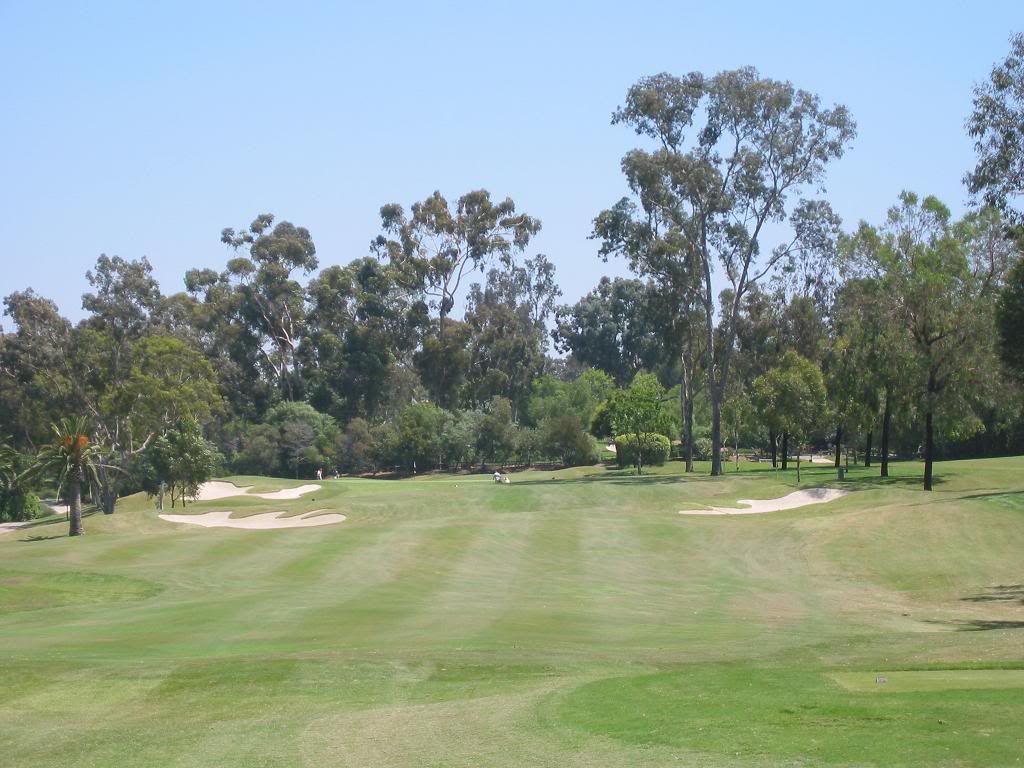
2cnd Hole 455 yard par 4
The bunker on the right was added in 1950
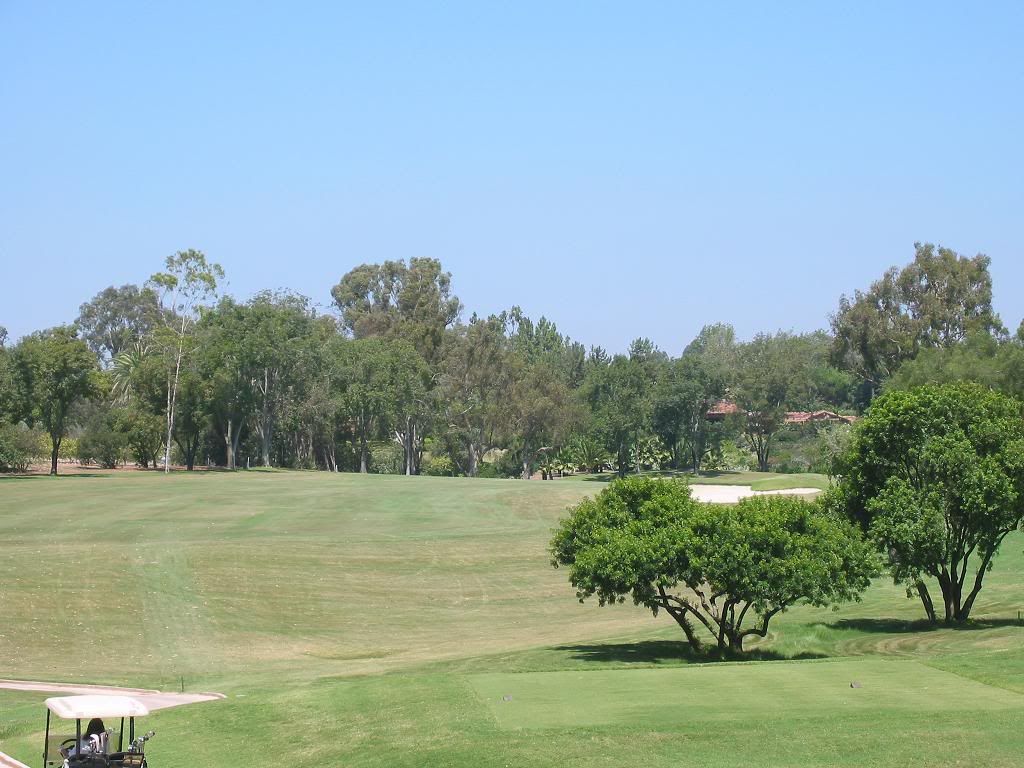
A look at the green, guarded by the eucalyptus tree
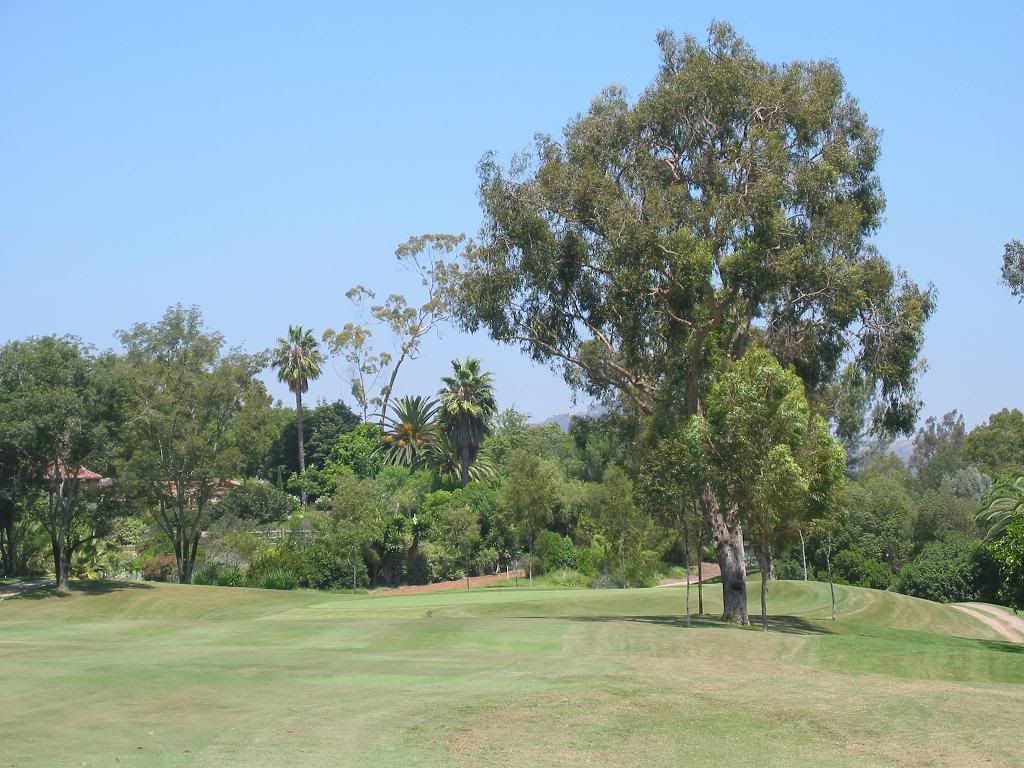
3rd Hole 192 yard par 3
The pond was dredged in 1973 from the creek bed
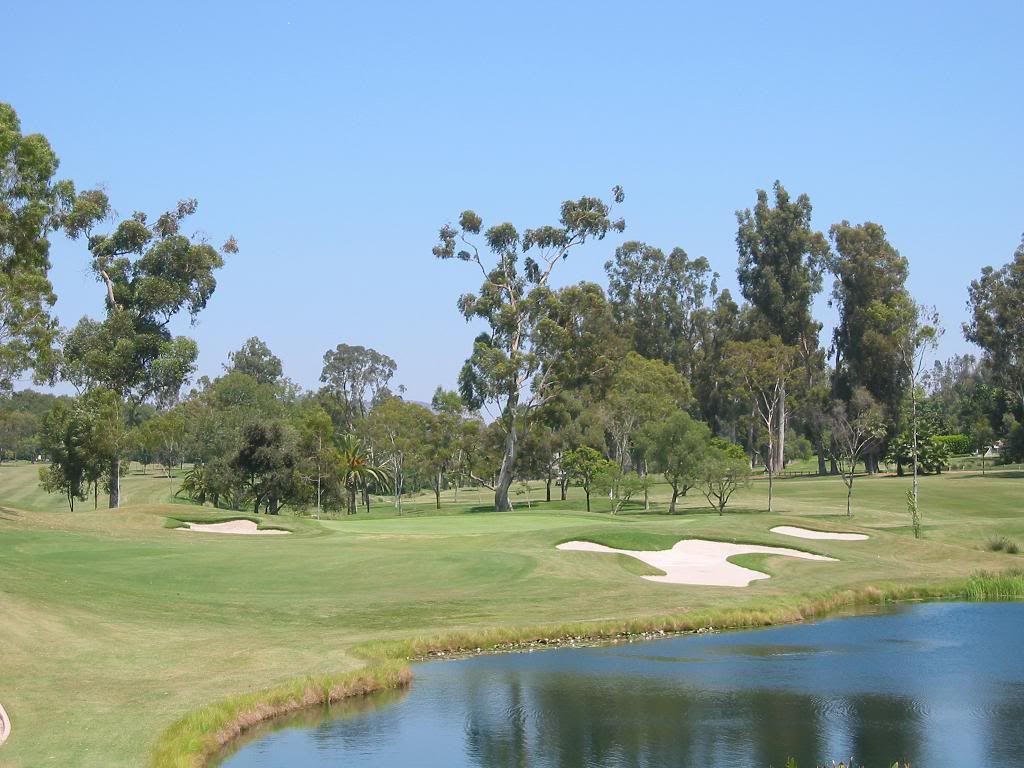
4th Hole 614 yard par 5
From the excellent book the History of Rancho Santa Fe CC: “When originally constructed, the landing area for drives straddled a sharp hog's back which would divert all but the most perfect drives out-of-bounds on the left. In the early 1950's to correct this unfairness, the fairway was leveled to its current topography.” Ouch, seems like they obliterated one of the most interesting features of the course! Here's the current view from the tee
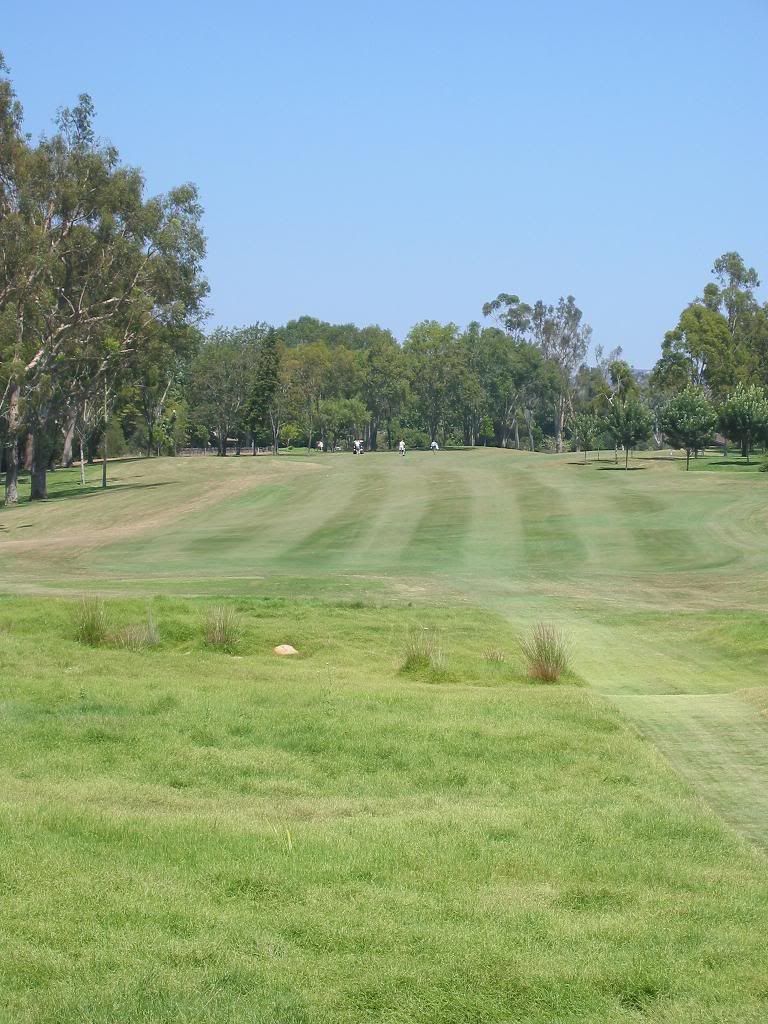
Here's a look at the green

5th Hole 427 yard par 4
The palms trees were planted in what once was the creek; you can detect the risk reward strategy that it originally provided.
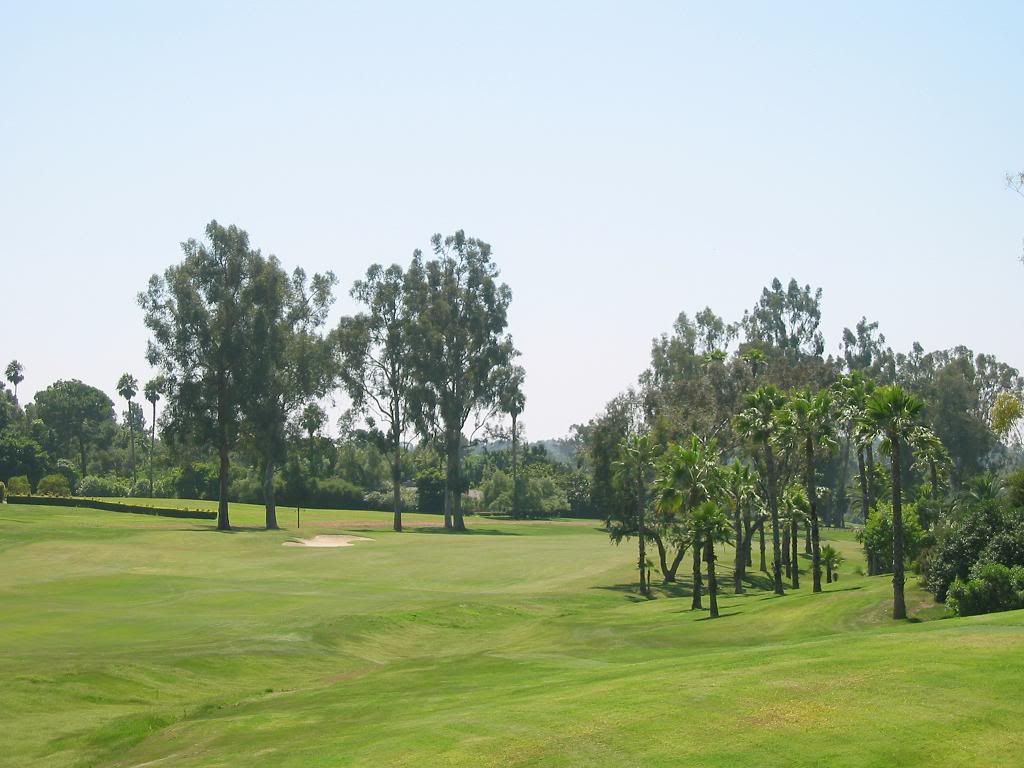
A look at the green
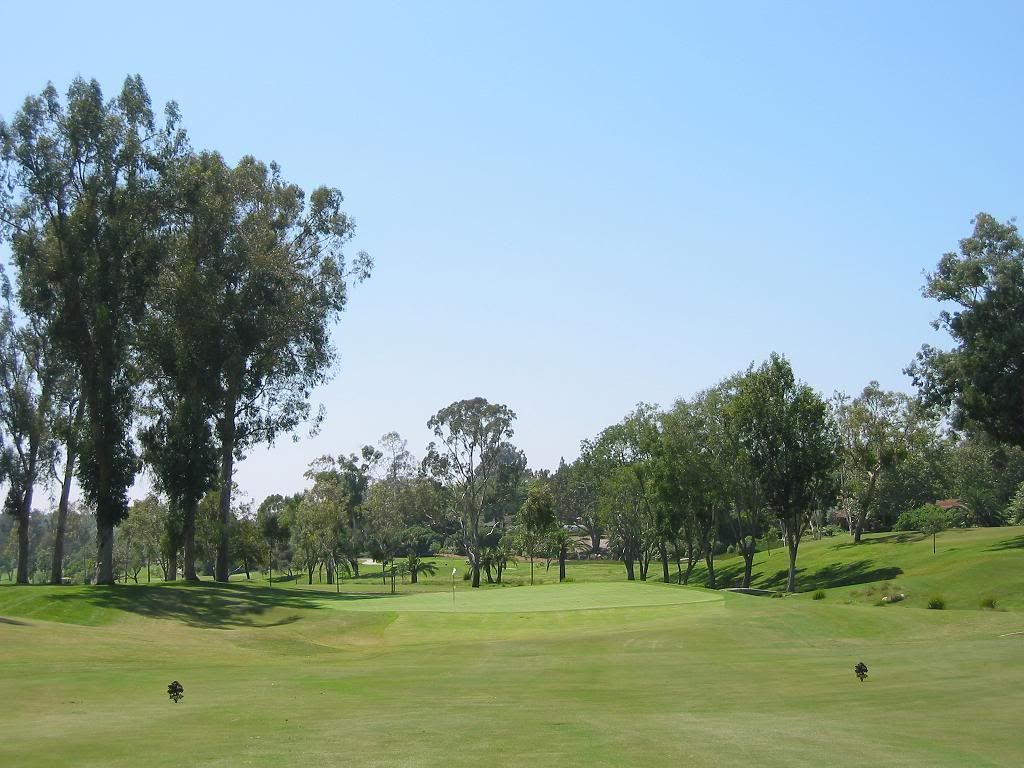
6th Hole 414 yards par 4
The hole doglegs hard to the right, the creek is no longer a factor for those who stray to far right
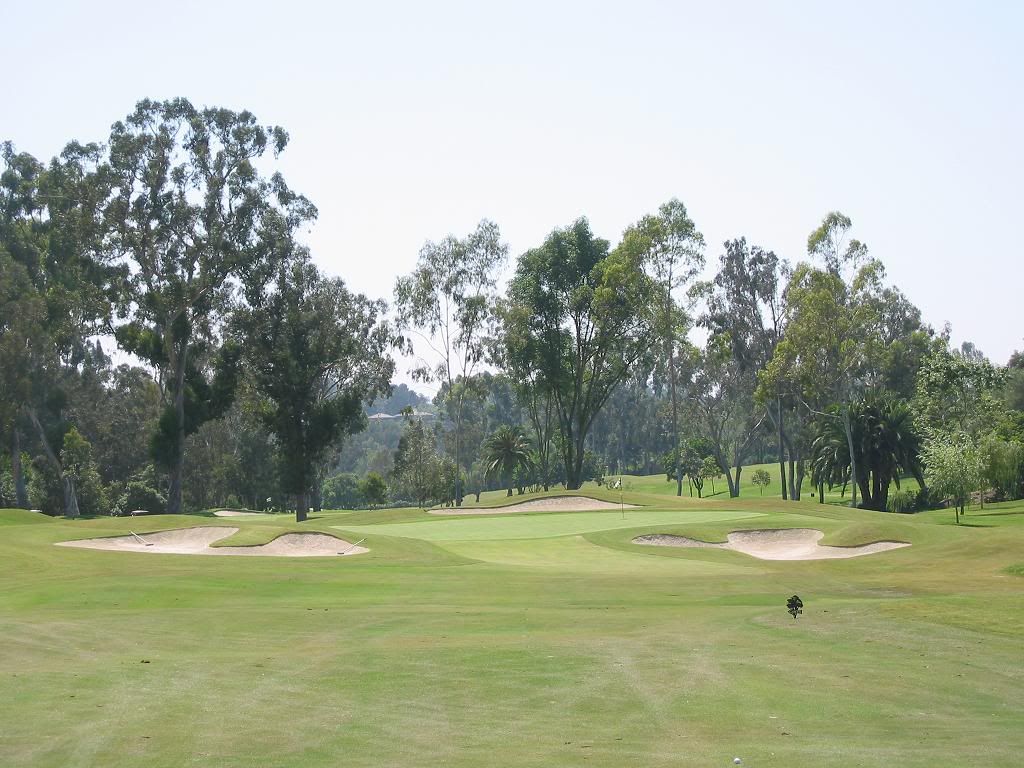
7th Hole 178 yard par 3
The hour glass green is wide but very shallow, only 12 paces deep in the center
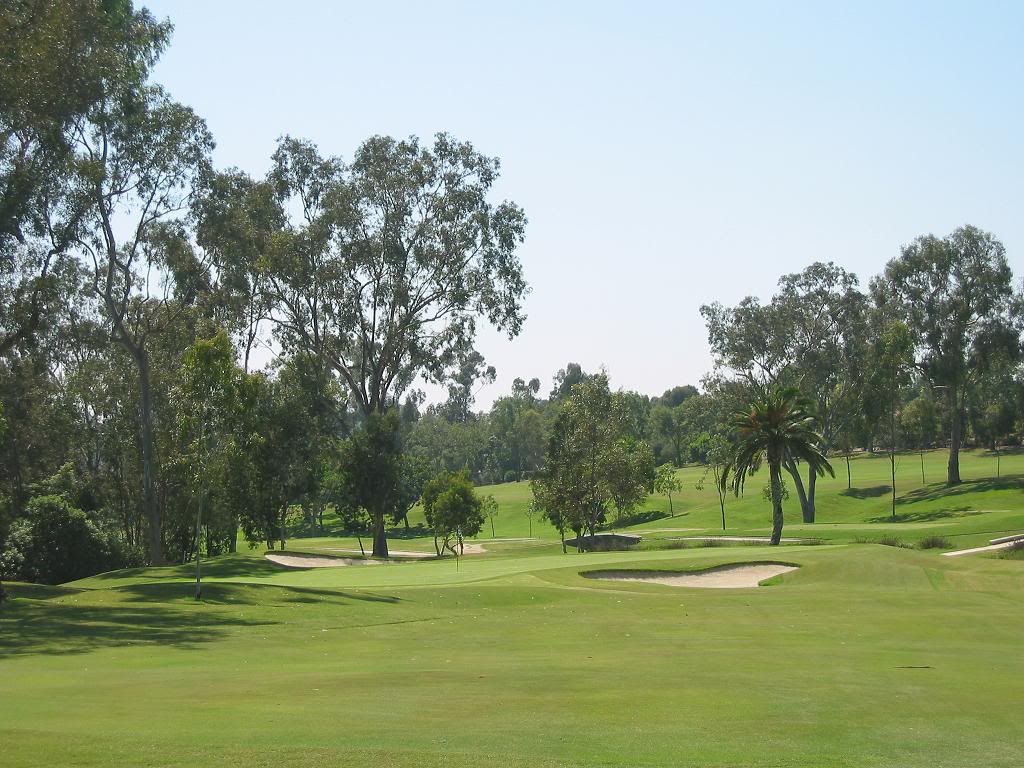
8th Hole 527 yard par 5
The 2 green side bunkers were added in 1960, the two fairway bunkers in 2002, a very attractive par 5 making great use of the terrain
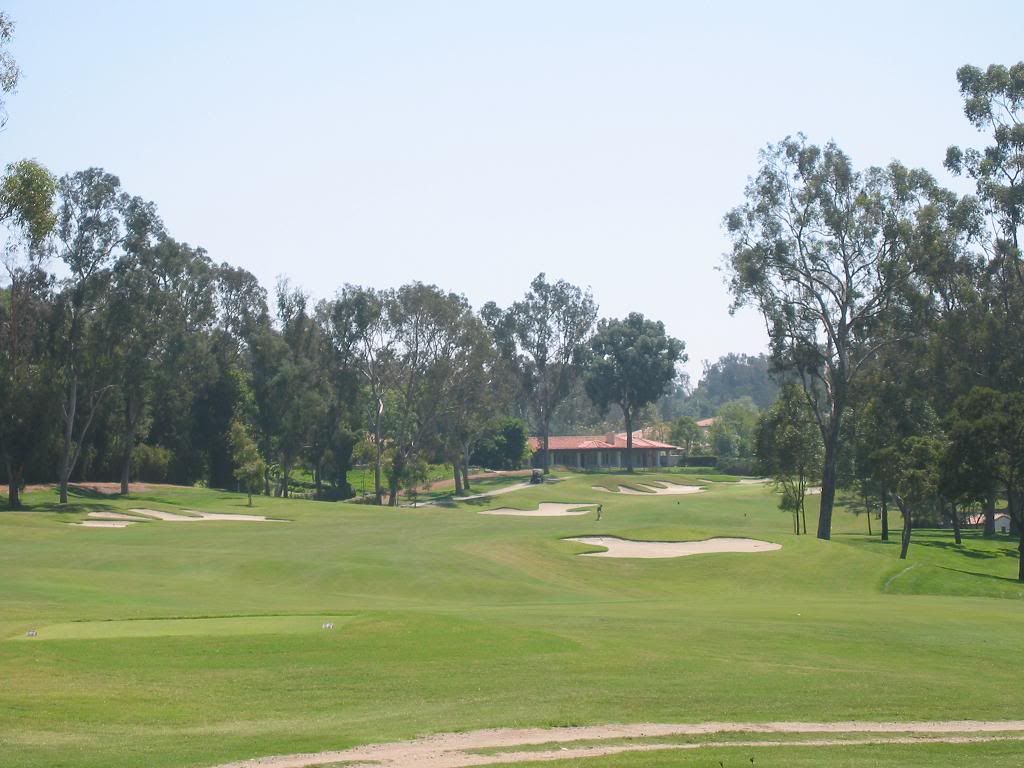
A closer view of the green
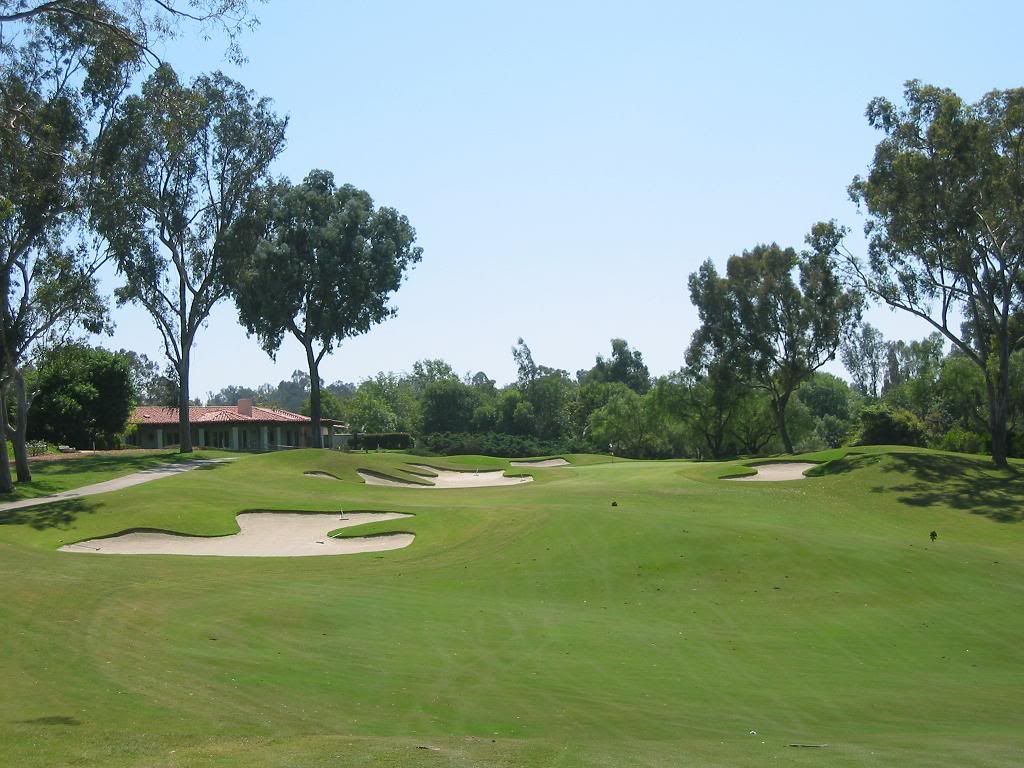
9th Hole 367 yard par 4
The slope takes balls to the right off this tee
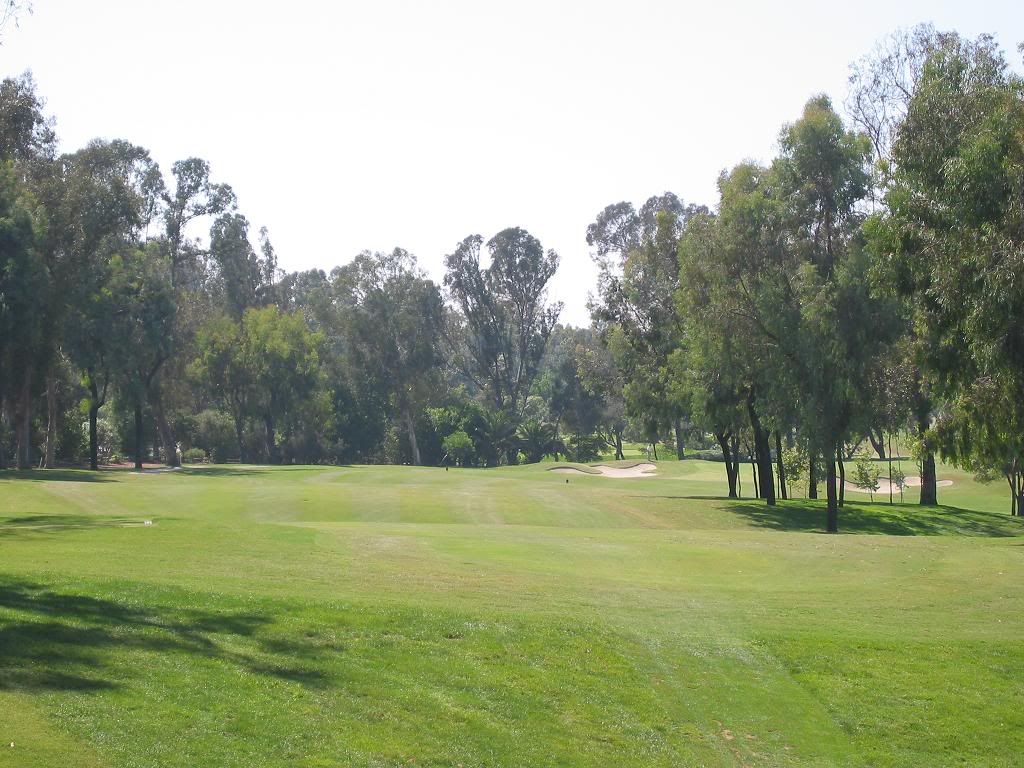
A look at the green
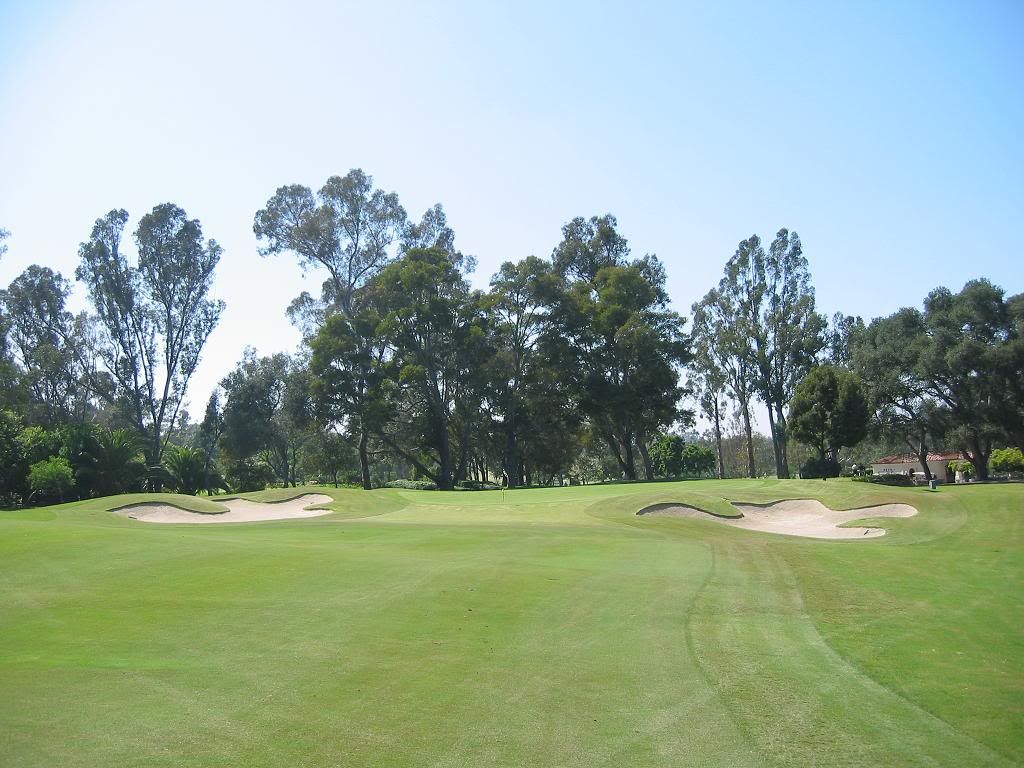
10th Hole 296 yards par 4
A very good short par 4 hole, the green has a wicked back to front slope; it will be interesting to see how many of the flat bellies hit driver here
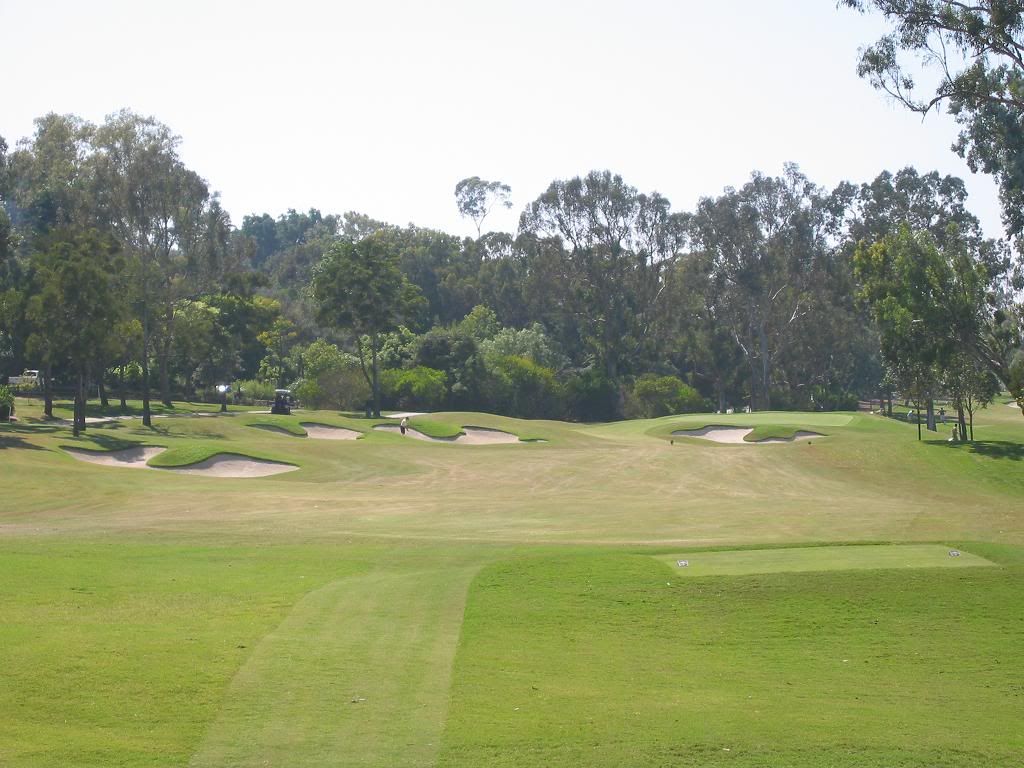
Here's what a layup will bring

Side view to show the slope

11th Hole 457 yard par 5
My favorite, this par 5 gives almost everyone hope to get home in two, but the journey is fraught with danger. The two fairway bunkers were moved 25 yards out in 2002
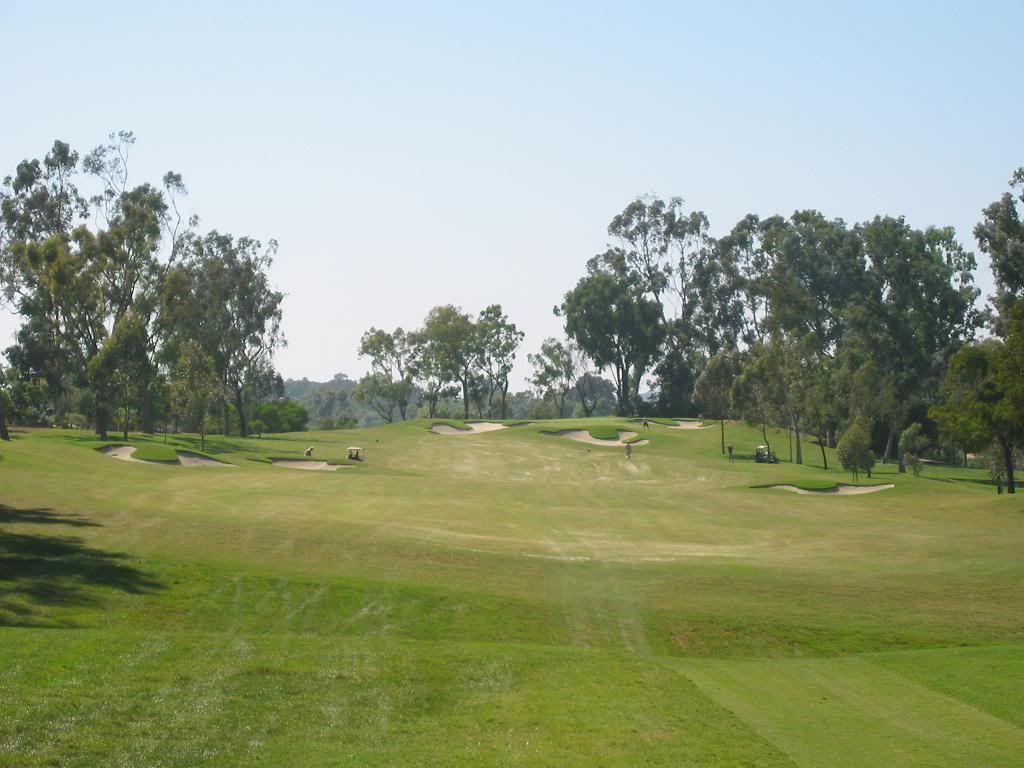
Here's the shot into the fortress green
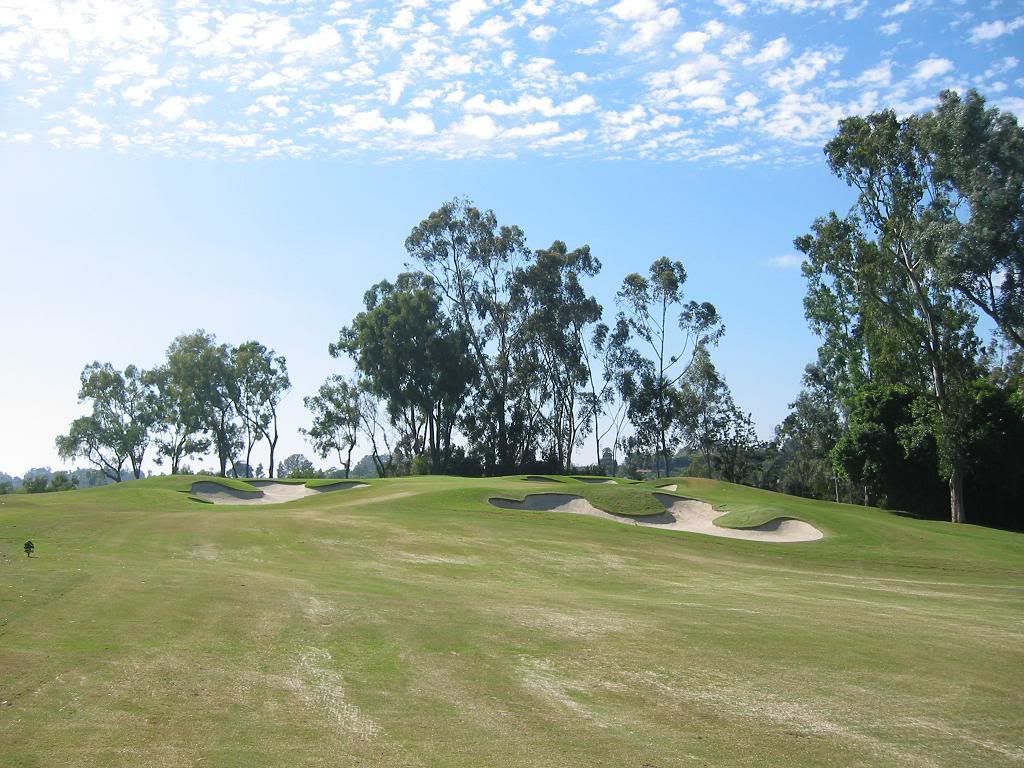
The second shot to the fortress green
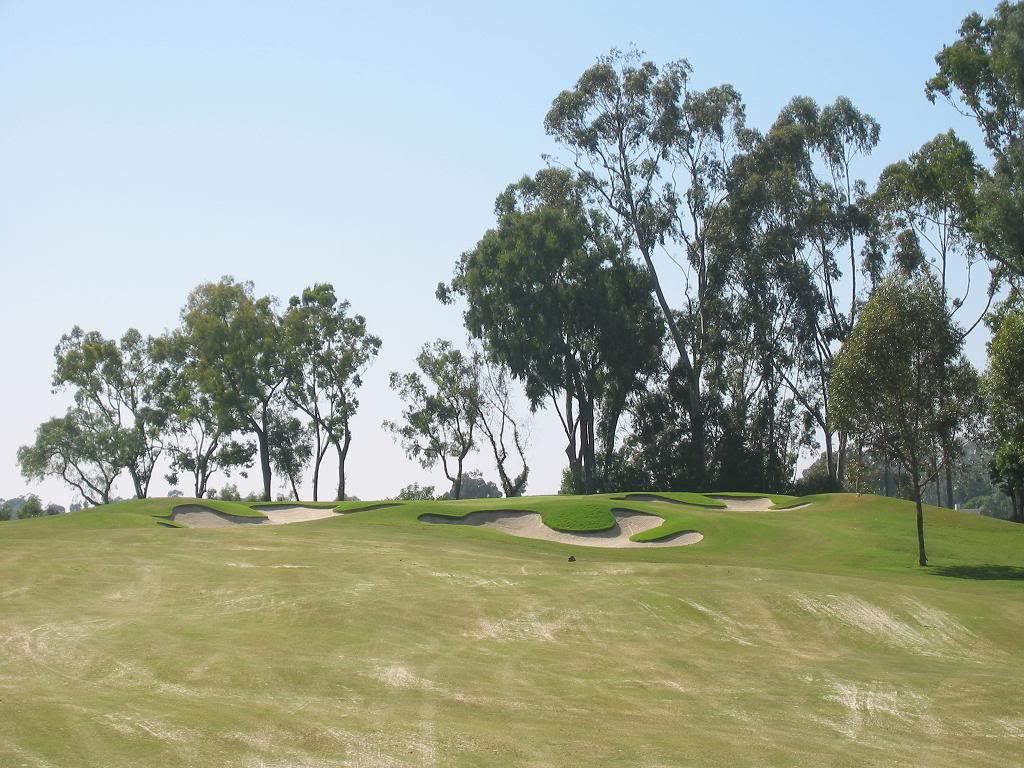
A closer look at the greenside bunker
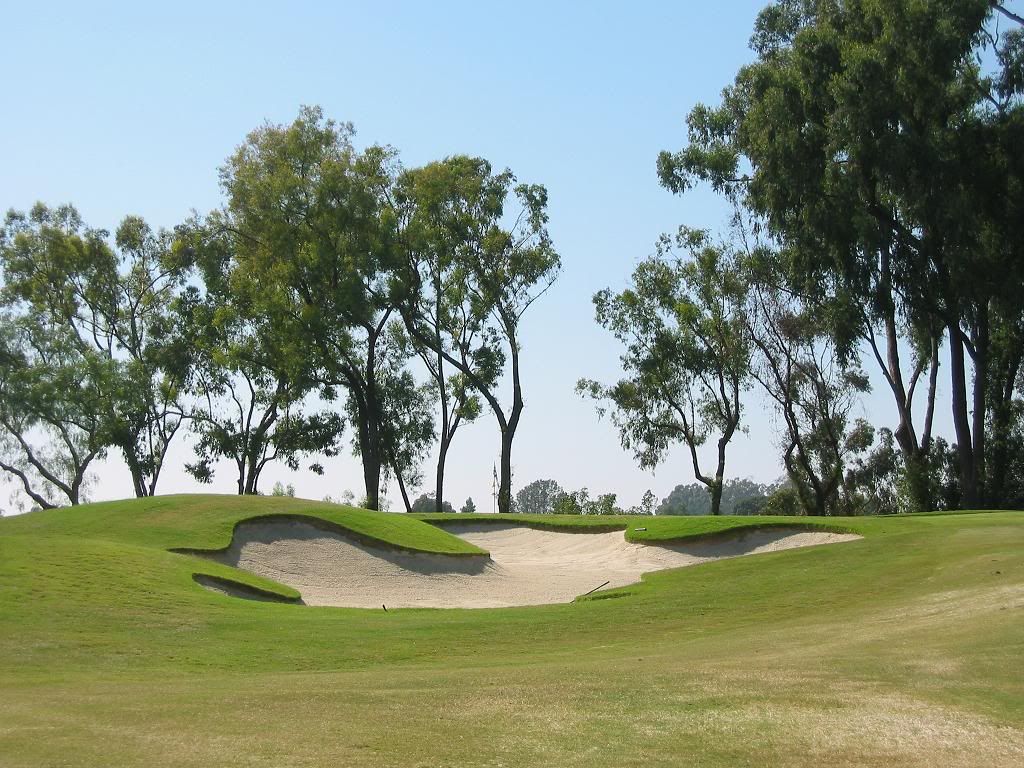
12th Hole 457 yard par4
Although the same distance as the previous hole this one is dramatically down hill. Behr placed a bunker in the middle of the landing zone; you can spot the depression where it once was located
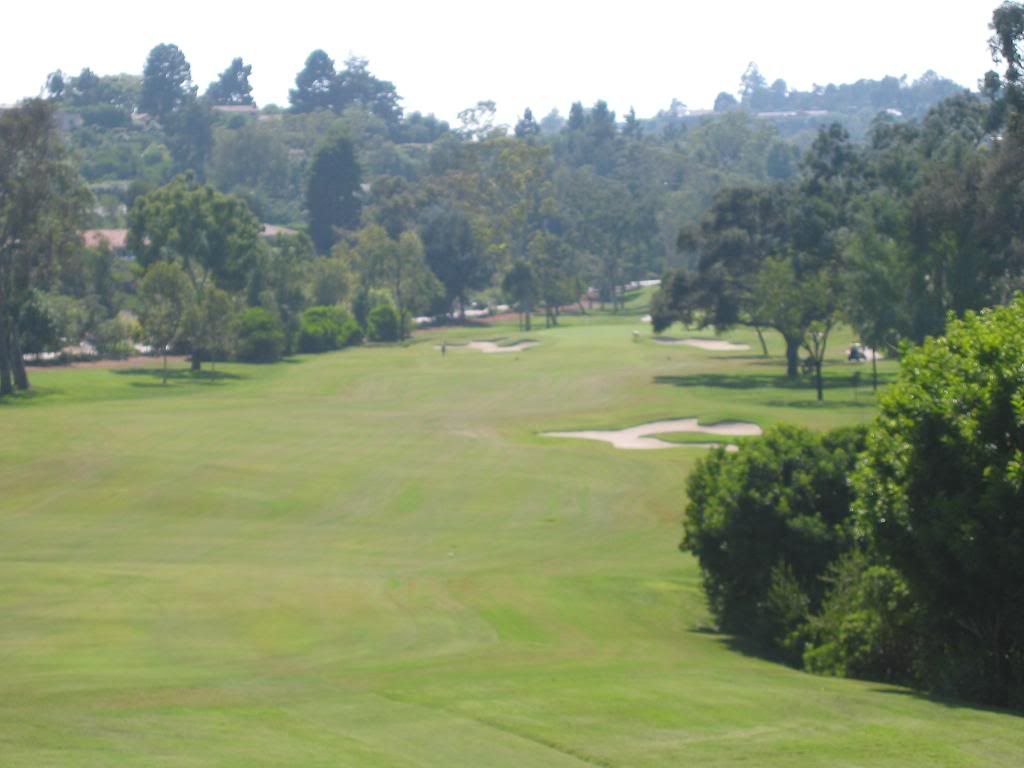
A look to the green

13th Hole 411 yard par 4
Originally the creek wrapped around the front of this green and had a marshy area filled with reeds as the main carry hazard. The pond was dredged in 1945. The current hole is awkward, although it does give the option to play safely left or try and drive over the man made running creek
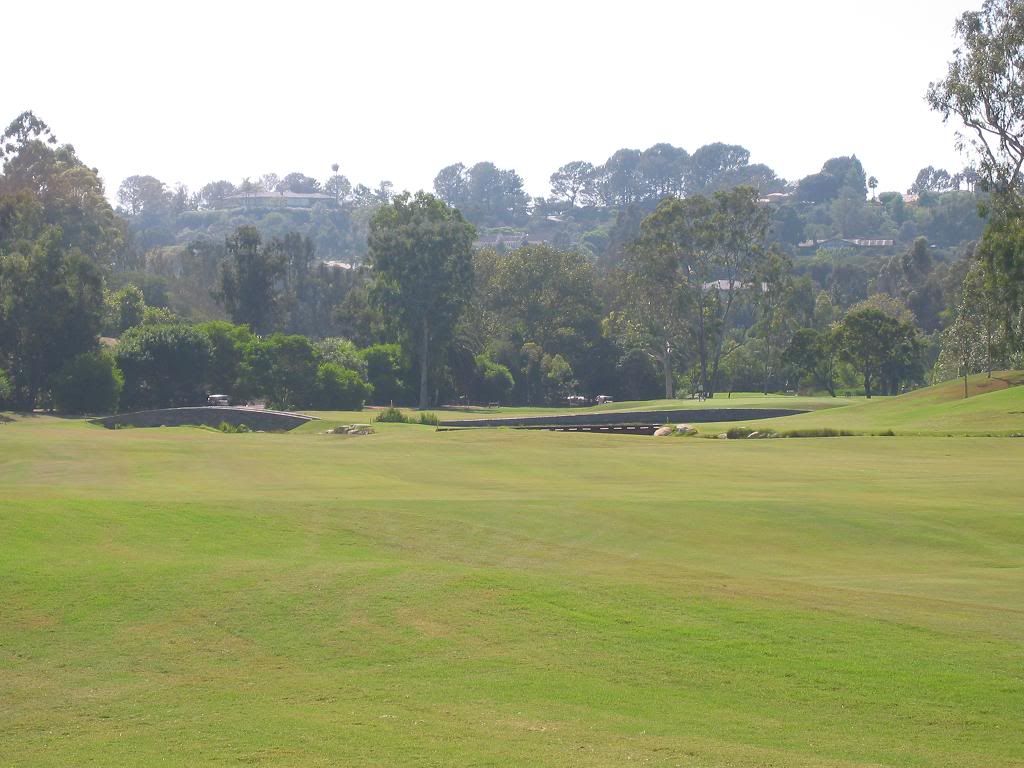
A look into the green
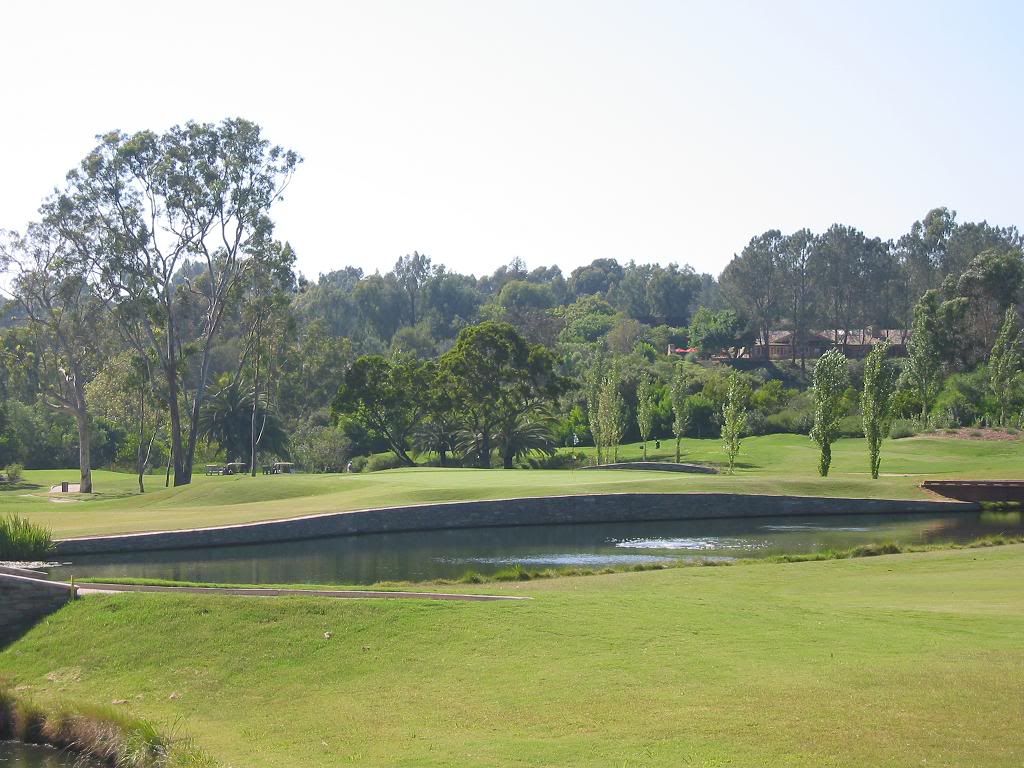
A side view of the green from the next tee; they probably spent more on these bridges than I did on my house
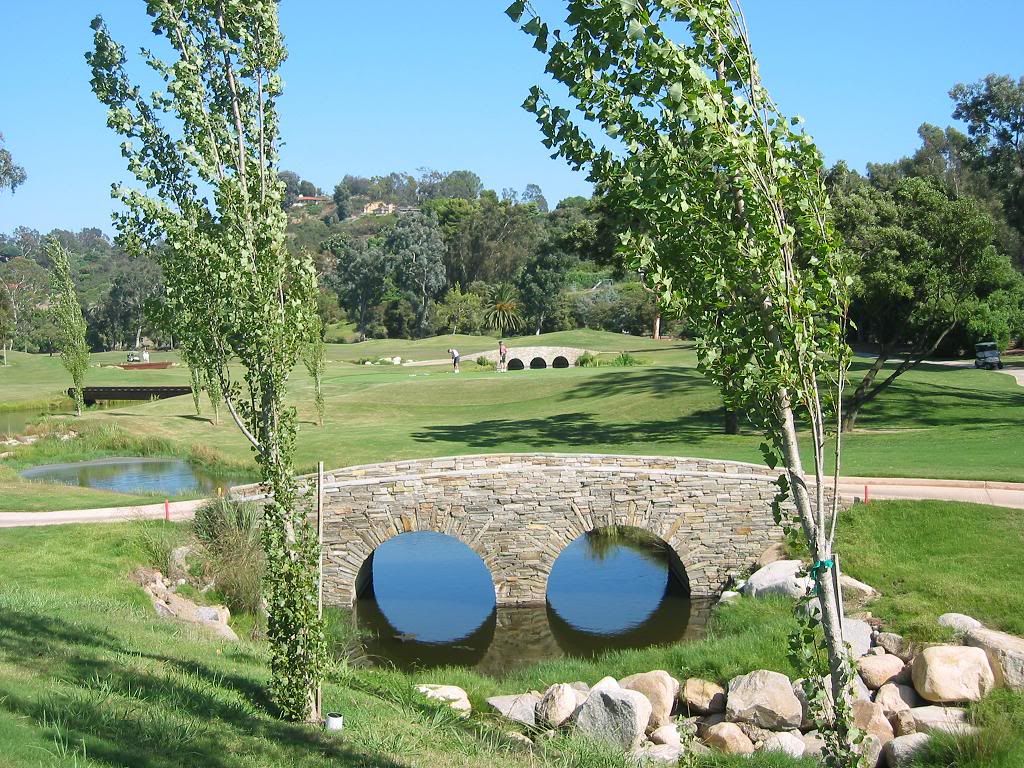
14th Hole 219 yard par 3
This elevated upper tee to the left was added in 2002
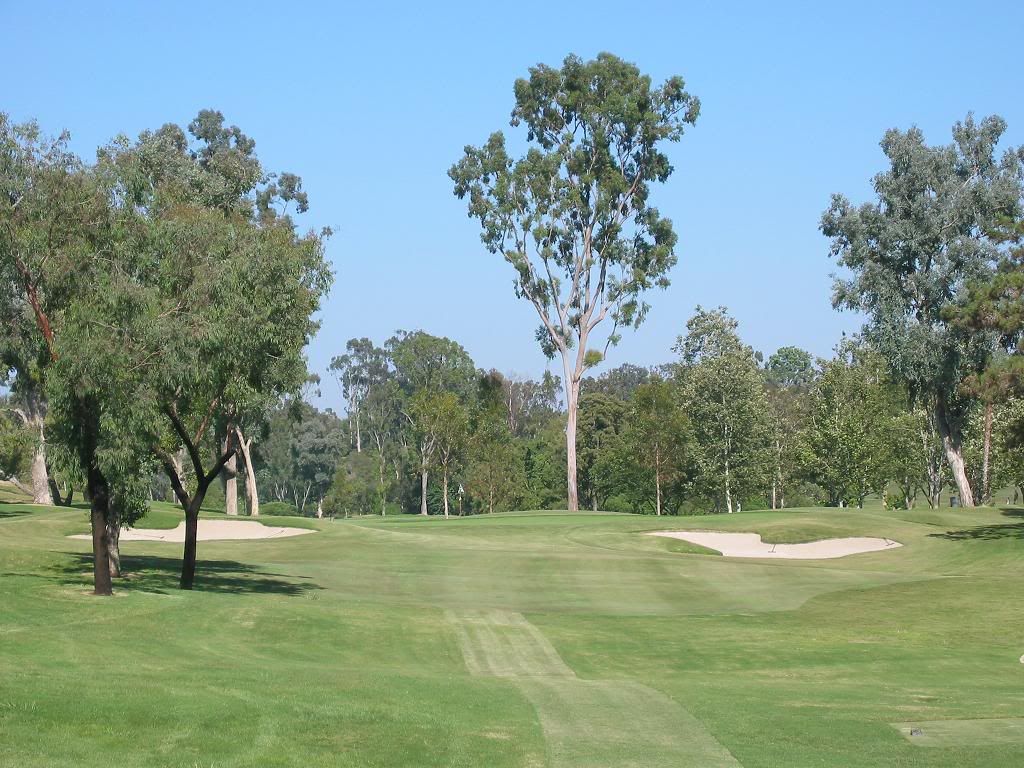
15th Hole 428 yard par 4
The bunker on the left was moved out 25 yards in 2002
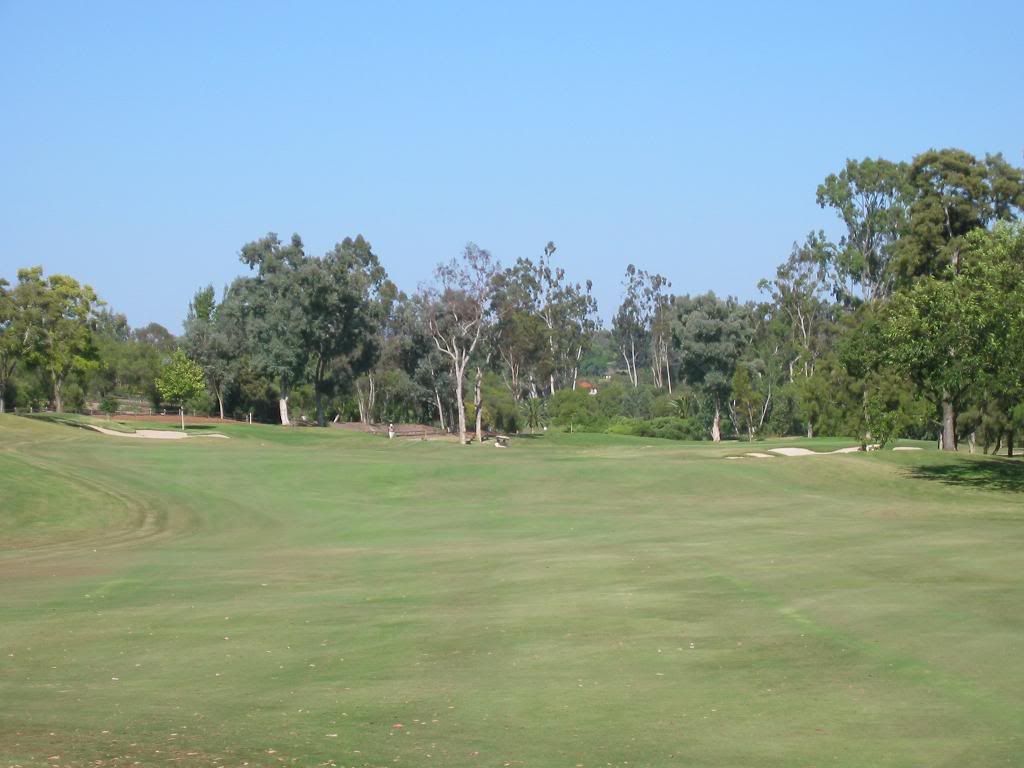
The creek used to protect the right side of this green

16th Hole 412 yard par 4
This dogleg left is probably the least changed hole on the course; the tall tree in the background is the club's logo
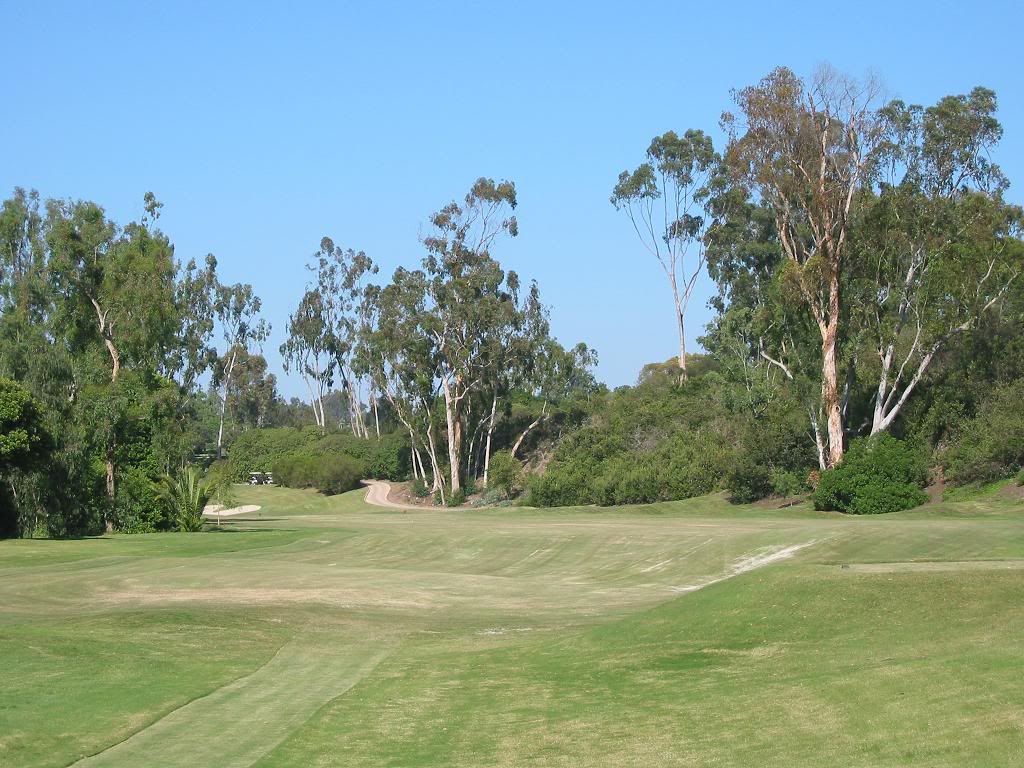
The green setting is completely in tune with the landscape
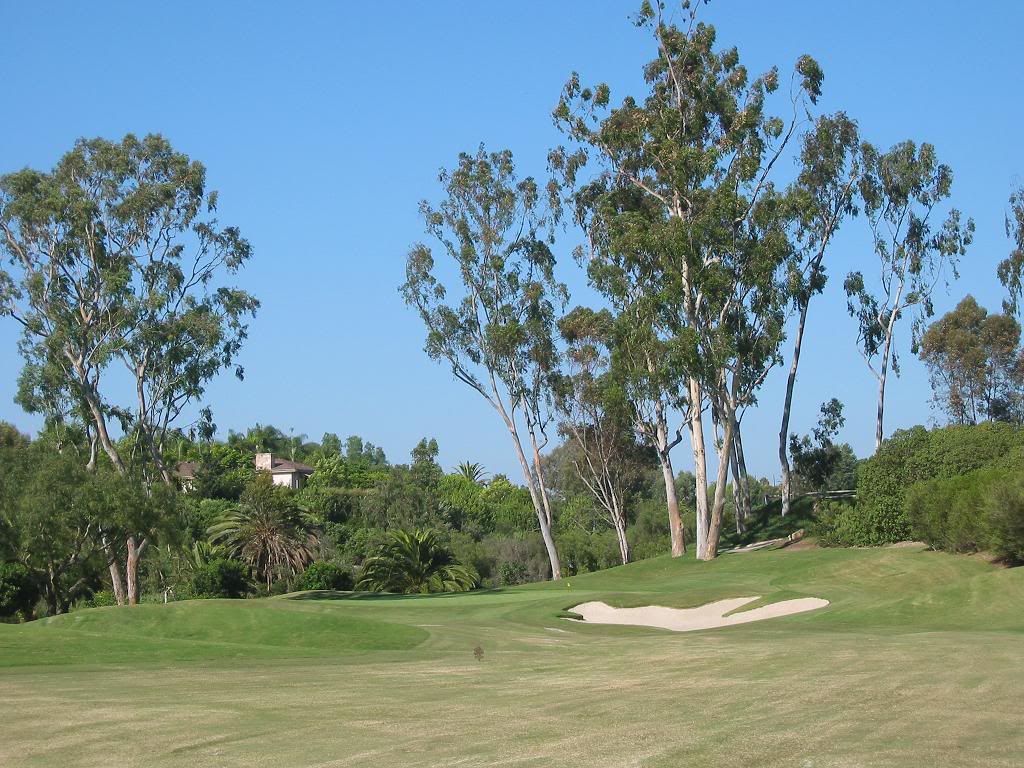
17th Hole 191 yard par 3
Here's the view from the original upper tee
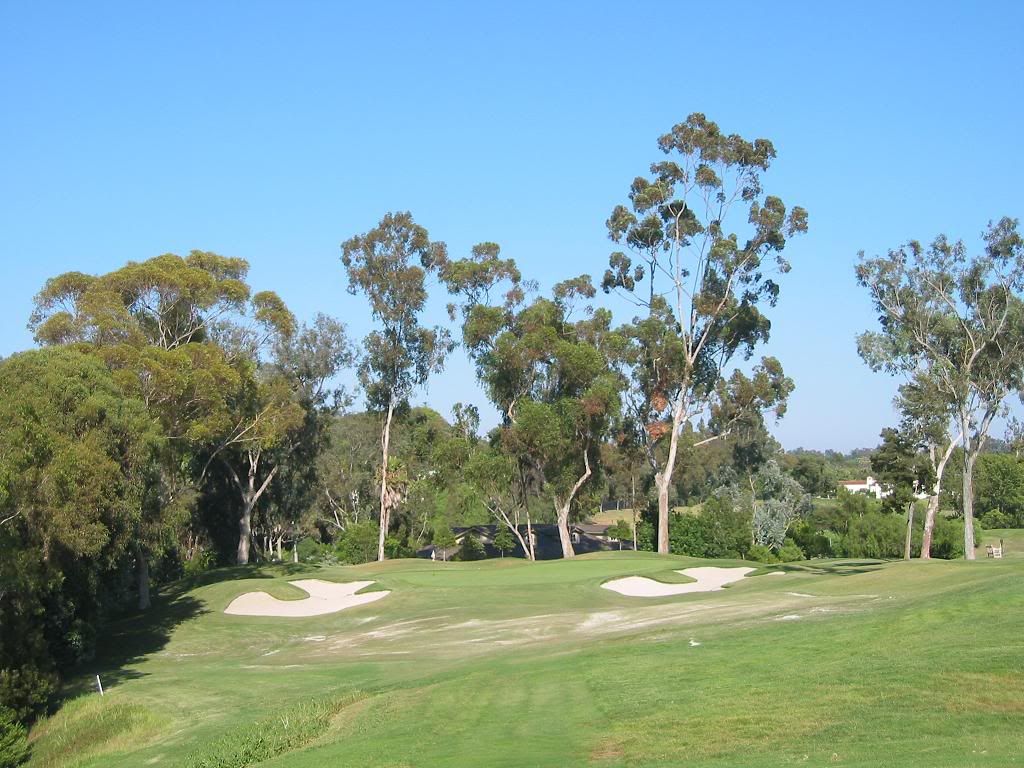
Here's the view from the lower tee installed in1955

18th Hole 603yard par 5
Originally this hole doglegged left up the hill to the green; a clubhouse was proposed at the top of the hill overlooking the green. When it became apparent that the clubhouse would not be built in this location the green was shifted down cardiac hill to its current location. Here's the tee shot

The green is hard to see in this shot
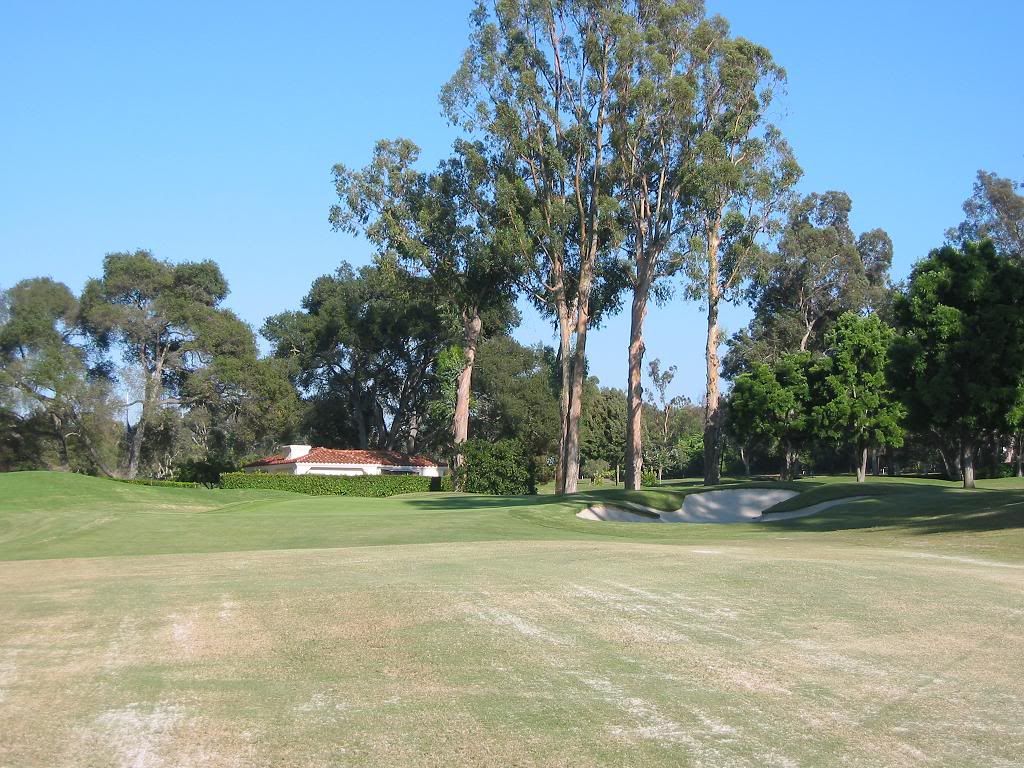
This side shot is much better at capturing its profile

Whenever you have “Old Money” you have horses

Here's one of the many catch basins installed in 2002

When all is said and done much of Max Behr's architecture has been lost, but a lot remains too. The course is still a fine test of golf and fun to play. As an exclusive private club it still provides access to those who can fork over the cash to stay at the Rancho Santa Fe Inn and pay the $210 green fee (mandatory $100 fore caddy). It truly is the best course south of the LA County line built before 1960; it could certainly be better if the membership ever truly embraces Max Behr's philosophy of golf as a test between Man and Nature.